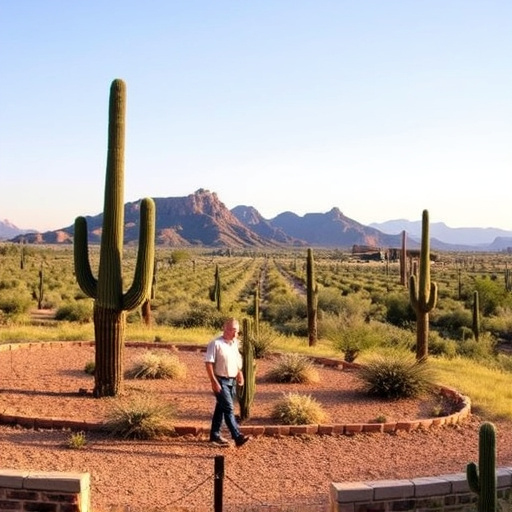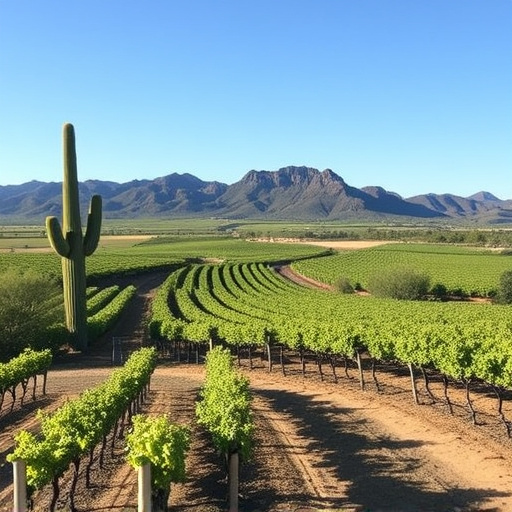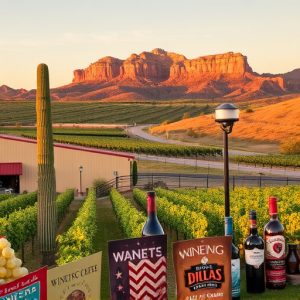Southern Arizona's diverse microclimates and unique terroir create an intriguing wine frontier for lovers and sommeliers. With varying elevations, water bodies, and soil composition, the region offers a wide range of grape varieties and distinctive wine styles, from crisp whites to rich reds. Exploring these terroirs reveals hidden gems, showcasing the intricate connection between geography and gastronomy that defines Southern Arizona wineries' distinctive character.
“Uncover the enchanting world of microclimate-driven wines in Southern Arizona, where diverse terroirs shape unique flavors. This region’s varying microclimates play a pivotal role in winemaking, resulting in an array of distinctive wine characteristics. In this comparative study, we explore how these microclimates influence the production and quality of wines from across Southern Arizona’s thriving wineries. Get ready to embark on a sensory journey through the heart of Arizona viticulture.”
- Exploring Southern Arizona's Diverse Terroirs: Unveiling Microclimate Influences on Wine Production
- A Comparative Study: How Microclimates Shape the Character of Wines from Across Southern Arizona Wineries
Exploring Southern Arizona's Diverse Terroirs: Unveiling Microclimate Influences on Wine Production

Southern Arizona, with its rugged landscapes and diverse microclimates, presents a fascinating frontier for wine enthusiasts and producers alike. The state’s terroir, shaped by elevation, proximity to water bodies, and unique soil compositions, plays a pivotal role in shaping the characteristics of wines produced within its boundaries. From the high-altitude vineyards nestled among the mountains to the warmer valleys, each microclimate contributes distinct flavors and aromas to the region’s already impressive wine portfolio.
This diversity is particularly notable among southern Arizona wineries, where winemakers carefully select sites to cultivate a wide array of grape varieties. The resulting wines showcase remarkable variations in style, from crisp and vibrant whites that capture the cooler terroirs to rich, full-bodied reds that embody the warmer regions’ influences. Exploring these terroirs allows wine lovers to uncover hidden gems and appreciate the intricate relationship between geography and gastronomy that defines the unique character of southern Arizona’s wine offerings.
A Comparative Study: How Microclimates Shape the Character of Wines from Across Southern Arizona Wineries

In the realm of viticulture, Southern Arizona’s diverse terroirs present an intriguing puzzle for wine enthusiasts and sommeliers alike. This region, with its microclimates as varied as the landscapes, offers a unique opportunity to study how environmental factors influence the character of wines produced by local wineries. When comparing wines from different areas within southern Arizona, one discovers a captivating symphony of flavors and aromas that reflect the distinct microclimatic conditions of each vineyard.
The state’s southern region boasts several terroirs, each with its own set of climate variables—from cooler, high-altitude regions to warmer, lower-lying areas. These variations translate into differences in grape ripening, sugar levels, acidities, and phenolics, ultimately shaping the wine’s flavor profile. For instance, wines from the higher elevations often exhibit brighter acidity and cleaner fruit notes, while those from warmer valleys may showcase richer, more robust characteristics. A comparative study of these microclimate-driven wines provides a fascinating journey through the heart of southern Arizona’s winemaking culture, highlighting the region’s ability to produce diverse, high-quality vintages.
Southern Arizona’s diverse terroirs, shaped by unique microclimates, offer winemakers a rich canvas to craft distinctive wines. This study highlights how these microclimates significantly influence wine production, resulting in a captivating variety of flavors and aromas that define the region. By exploring the characteristics of wines from different southern Arizona wineries, we uncover the intricate relationship between terroir and taste, enriching our appreciation for the local wine scene and encouraging further exploration of these exceptional beverages.
